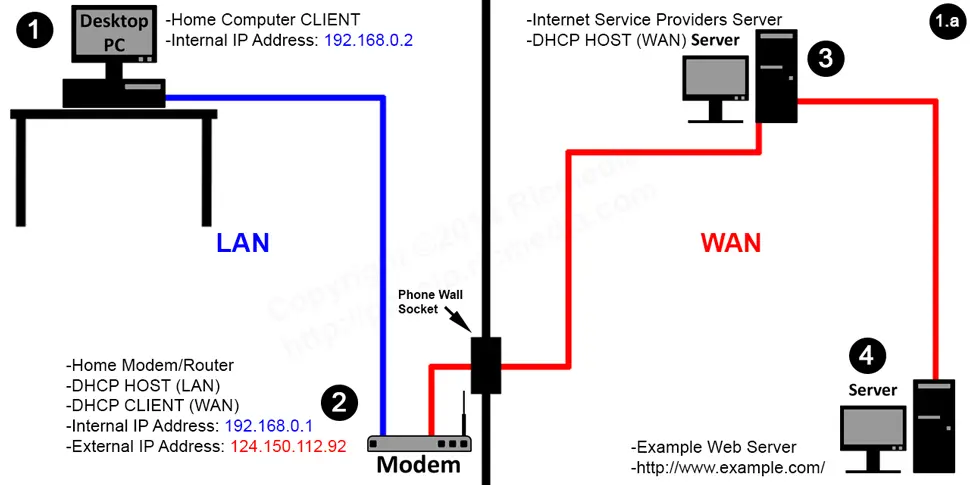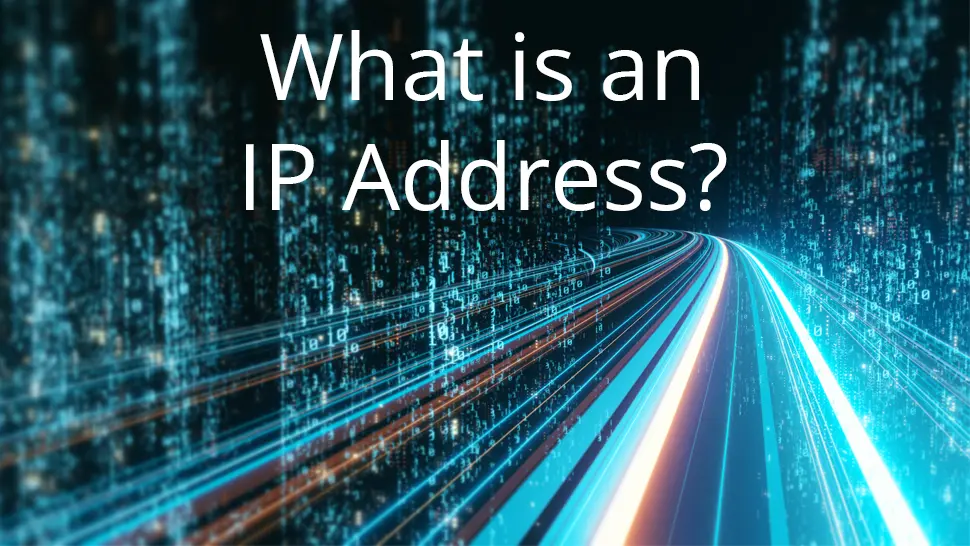Contents
- What is an IP address?
- IP address assignment
- Internal vs External IP Address
- Private Network IP ranges
- Conclusion
- Links
What is an IP address?
An IP address is a number sequence assigned to your computer to enable identification over a network. You could say an IP address is like your home address where you live, and the network traffic is like your mail. For your mail to be delivered correctly, the post office needs to know your address. A computer network operates in a similar way in that each computer on a network is assigned a unique number (your address) to enable the “packets” of data (your mail) to be delivered to the correct computer. When the packets arrive at your computer, they’re put back together again and become web pages, video and audio etc.
IP address assignment
The two most common methods of assigning an IP address are DHCP (Dynamic Host Configuration Protocol) and Static IP assignment:
DHCP
DHCP is a system that automatically assigns an IP address to any device on the network. With DHCP, when your computer connects to the network, it will be automatically assigned an IP number by the network host (another computer or router/modem) and after a set timeframe, will refresh that connection and generate a new IP address. Now your computer (also known as a client) can send and receive data packets to/from the host over the LAN (Local Area Network), and the host can send and receive packets to/from the internet over the WAN (Wide Area Network).
Static
Static assignment is generally only used by servers or by users who specifically request a static IP from their Internet service provider. With static IP assignment, IP numbers remain the same and do not change over time like DHCP addresses do. From that point on, everything works the same way as DHCP, data packets are sent and received to/from the client and host over the LAN, and to/from the host and internet over the WAN.
Internal vs External IP Address
Confusion about networks and how they work (particularly with home networks) usually arise when we talk about the LAN, WAN, external IP address and internal IP address. So let’s try to clear things up so you can have a better understanding of how a network operates.
Diagram 1.a below is a visual representation of a typical home network and WAN (click to see a larger image/diagram).

Let’s go through each number on the diagram:
- Computer #1 is a desktop computer (similar to what you would be using) and is a CLIENT on the home network LAN. It’s internal IP address is
192.168.0.2. This IP address is negotiated with the modem/router, which is the network HOST. - Number #2 is the modem which may also have a built-in router, firewall, WiFi or VoIP ports, but for the sake of simplicity, our example device is a basic modem with built-in router. This modem/router plays two important roles on the home network:
- On the LAN side, it acts as the network HOST and controls assignment of IP numbers (from 192.168.0.2 to 192.168.0.254, with its own Internal IP address as 192.168.0.1 a.k.a default gateway) using the DHCP protocol.
- On the WAN side, the modem acts as a CLIENT to the ISP’s HOST server, and is assigned an IP number by that server using the DHCP protocol (the real IP number will vary according to what ISP you are using but as an example we will use:
127.150.112.92).
- Computer #3 is your ISP’s server which acts as a HOST to your modem/router and controls assignment of the IP number given to your modem/router using DHCP. It also verifies your modem login details and allows or disallows access to your ISP’s network.
- Computer #4 is a web server. A web server is simply a computer that stores web pages and other data files and “serves” them up to any computer that requests it. When you requested the page you are reading now, you probably clicked on a link first. By clicking that link, your computer sent a request to your modem/router, which then sent the request to your ISP’s server, which then sent the request to our web server. Our web server then sent back this page to your ISP’s server, which then sent it to your modem/router, which finally sent it back to your computer. This transaction takes place in milliseconds.
As you can see, an internal IP address is simply an IP number on the LAN, and an external IP address is the IP number on the WAN. If a website “logs” your IP address (for instance in a forum), it will always be the WAN IP number, not the LAN.
Private Network IP ranges
The number system used on your LAN may differ from the above example, but the concept is the same. There are three (3) numbering systems (IP ranges) reserved for private networks, they are:
10.0.0.1to10.255.255.255172.16.0.1to172.31.255.255192.168.0.1to192.168.255.255
Do I need an external static IP address?
Unless you have a server running 24/7 or another specific reason, you do not really need an external static IP address. If you do need a static IP address, be aware that you could become the target of hackers, so you’ll need a good firewall and other security measures in place.
Conclusion
I hope this article has cleared up what an IP address is, why they’re needed, and how they’re generated. If you have any questions leave a comment, or contact me via socials/email.


Comments
There are currently no comments on this article.
Comment